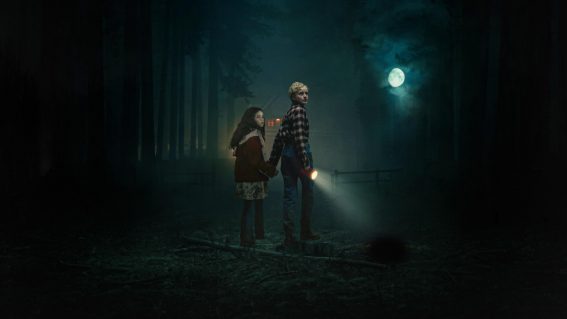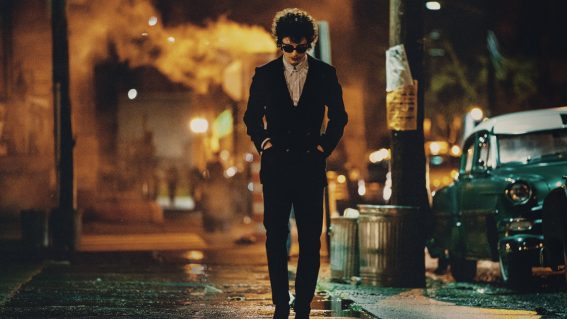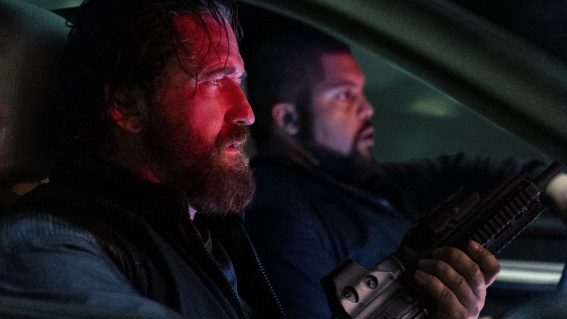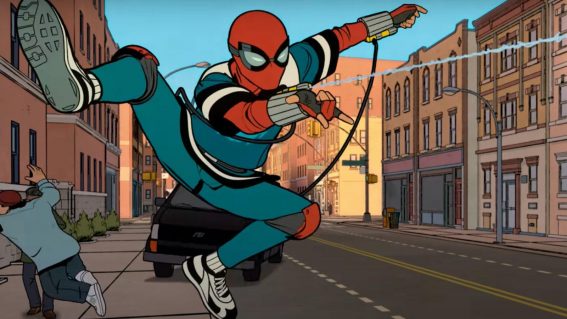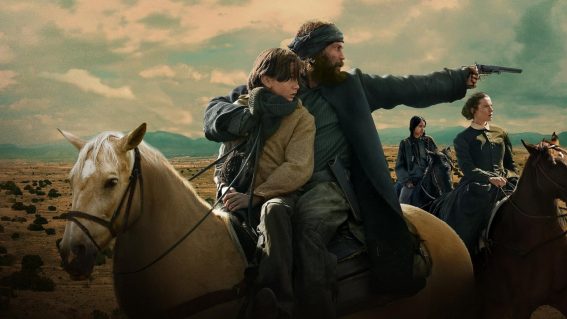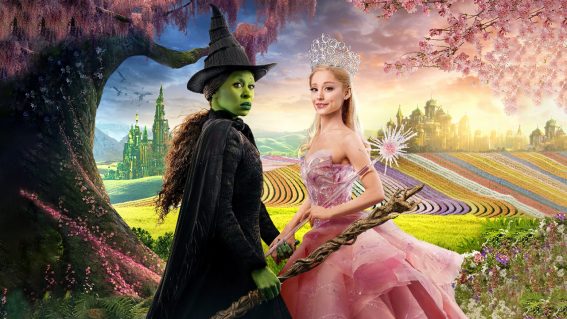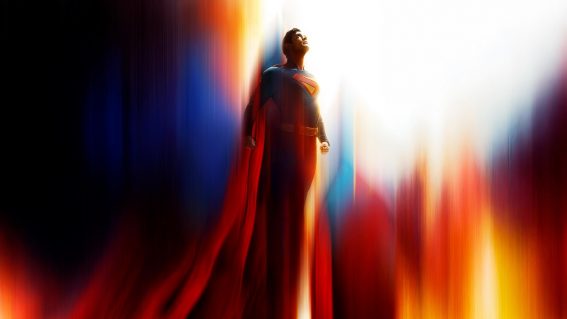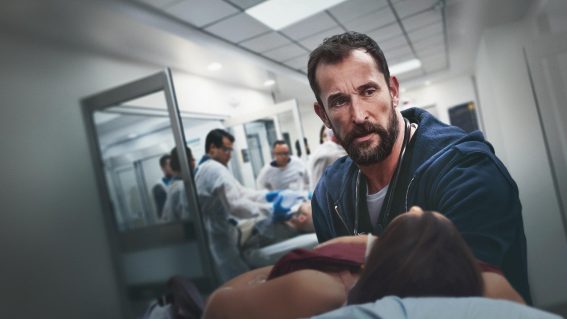Retrospective: As Batman Returns turns 30, here’s why it’s still the best bat-movie
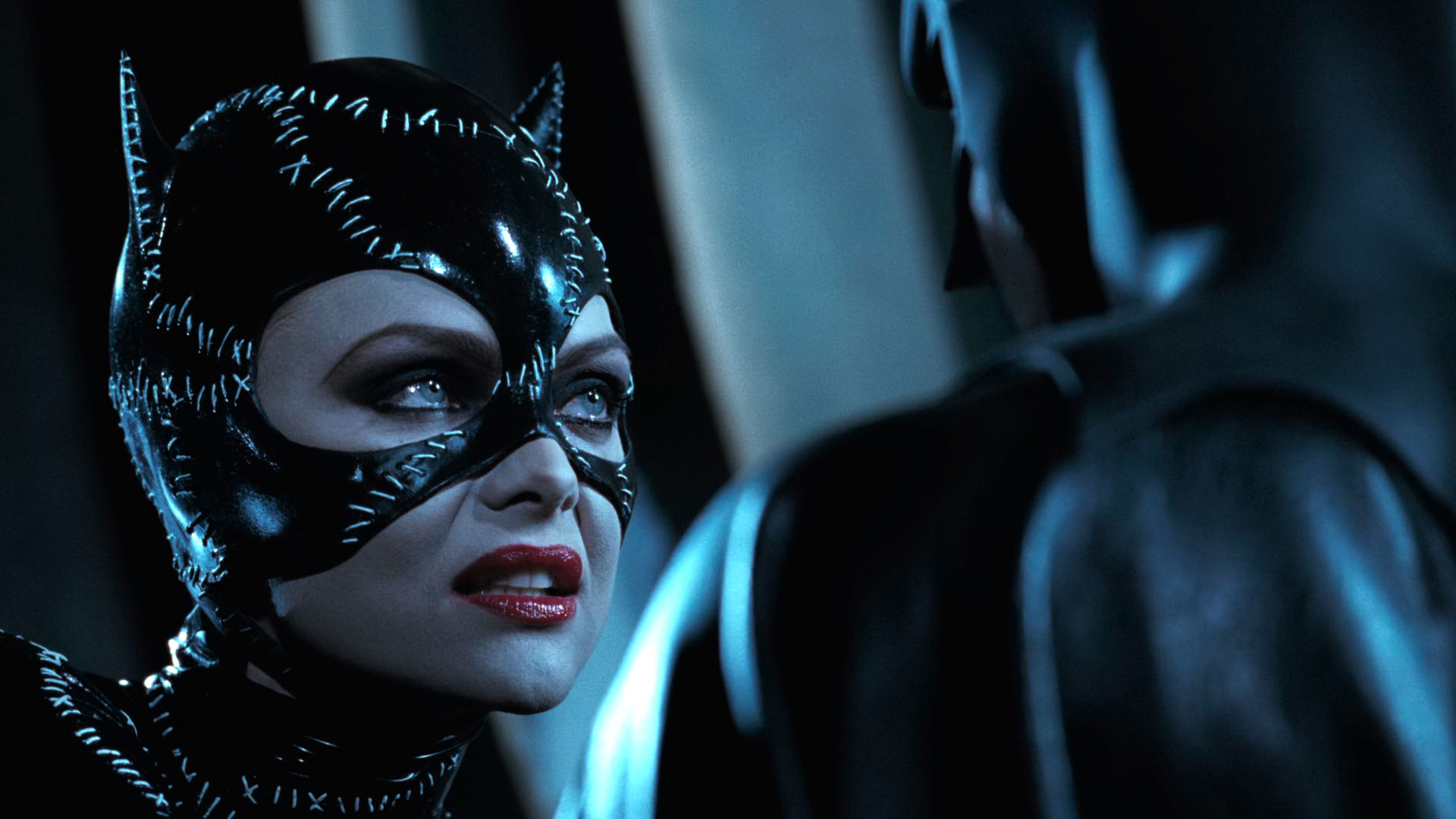
1992’s Batman Returns saw Tim Burton reunite with Michael Keaton and introduce a trio of great actors (Pfeiffer, DeVito, Walken) to his grim Gotham. Despite more recent pretenders, it remains the true benchmark of quality bat-cinema, writes James Nokise.
Batman Returns
Matt Reeves’ 2022 interpretation of an often-told story about a billionaire criminal basher with unprocessed childhood trauma (aka The Batman) has been praised for its social politics, stirring soundtrack, and brilliant performances—particularly the characters of Catwoman and Penguin—the way the city of Gotham is also used as a character, and the dark tone of its storytelling.
Some believe it challenges The Dark Knight as the best film involving the Caped Crusader. Of course, that debate depends on a belief that Christopher Nolan’s epic tale, with Heath Ledger’s mesmerising Joker taking on Christian Bale’s “Swear to me!” Batman is the gold standard for cinematic depictions of Bruce Wayne and his bat-suited hijinks.
It is not.
The true benchmark for quality cinematic bat-themed crime-fighting was established 30 years ago.
After 1989’s Batman had outgrossed sequels to the four great series of the 80s (Indiana Jones, Back to the Future, Ghostbusters, Lethal Weapon) director Tim Burton and crew reassembled on a Warner Bros.’ movie lot to produce the masterpiece Batman Returns.
Burton at this point is in the prime of his neo-goth-pop phase which runs from 1988’s Beetlejuice through to 1999’s Sleepy Hollow. To be clear, that’s the prime, not the phase. Tim Burton will forever be neo-goth-pop, and it’s still incredible that someone looked at his work and went “this guy should direct Planet of the Apes”.
His ability to create impressions of America gels perfectly with comic book source material and, unlike 21st century Batman films, Gotham doesn’t look like the city it was filmed in, but rather a sort of timeless industrial America. However, this time around, there is snow everywhere, conceivably the same snow being made by Edward Scissorhands at the end of Burton’s 1991 cult classic. That’s probably because cinematographer Stefan Czapsky shot both.
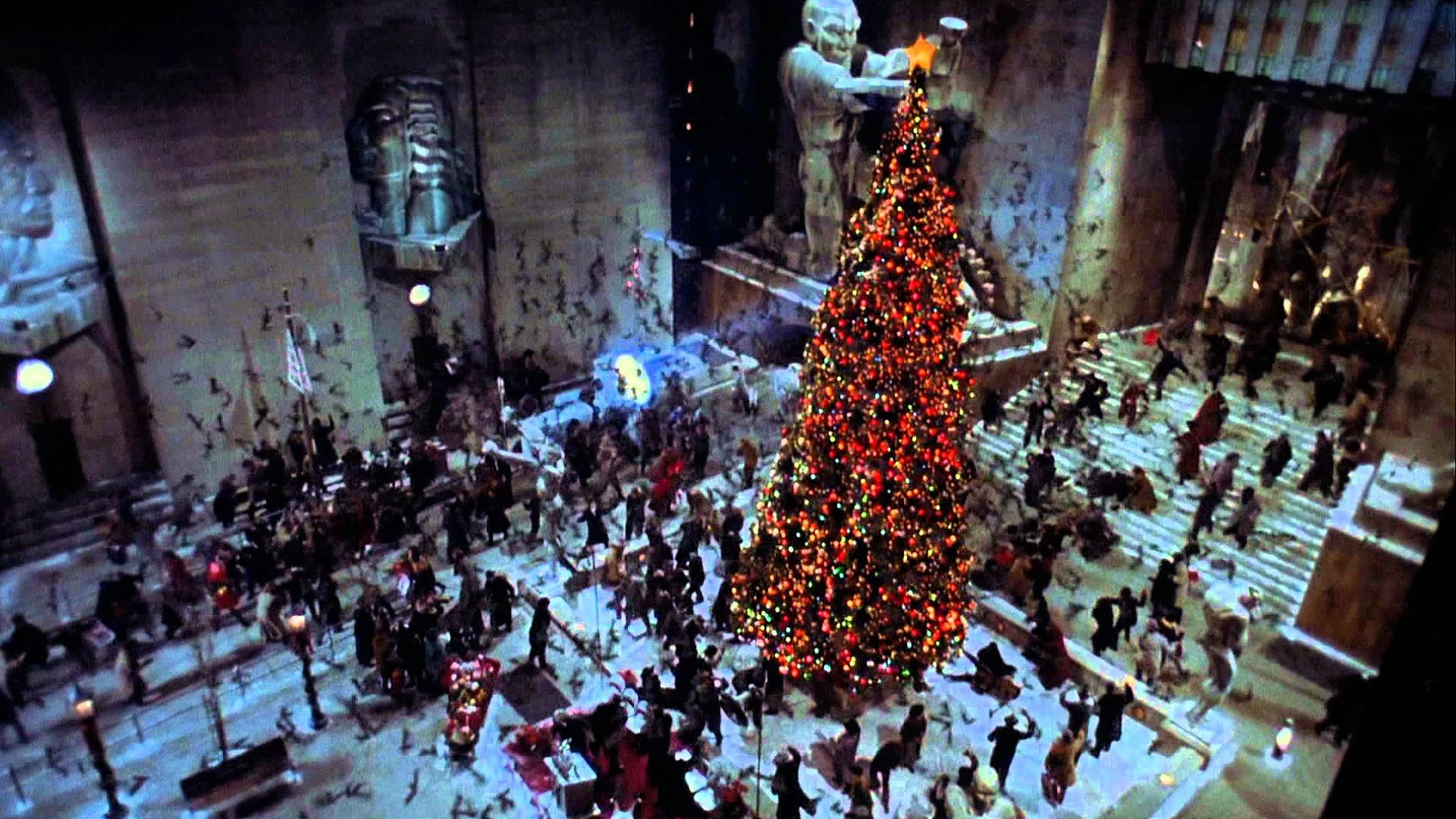
Is the snow and wintery setting a metaphor for the loneliness of the main characters? Probably, but it’s also because what separates this Batman outing from others is… it’s a bona fide Christmas film, set during the holiday season, with tree lightings, mistletoe, Christmas stockings, and giant gift boxes. Long-time collaborator Danny Elfman even improves on his signature Batman brass composition by adding some Christmas carol “bom boms”. The first spoken dialogue in the film is “Merry Christmas”.
Of course, this is a Tim Burton film, so that line is spoken by parents to a couple of passing strangers before they throw their baby off a bridge and watch it float downriver into the sewers. To be fair to those parents, they had just watched it murder a kitten.
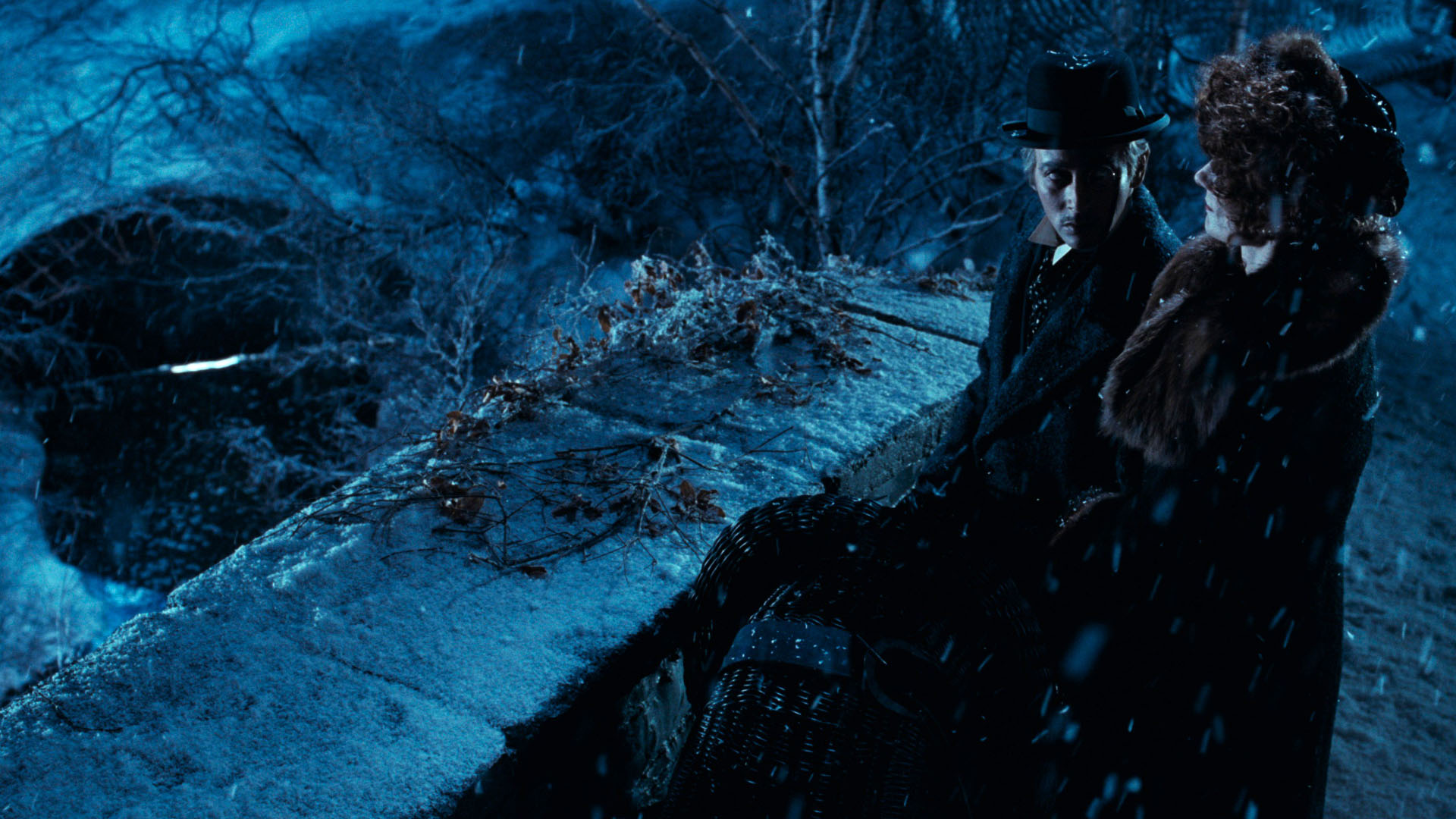
Oh did you think the Joker killing his bank-robbing crew, or The Riddler murdering the Mayor were dark openings for a superhero film? Perhaps you conveniently forgot about the kitten-murdering baby that gets thrown off a bridge? Spare a thought for parents who had no idea about comics and sat with their kids in 1992 cinemas wondering what the hell they’d just brought their children to, because this is all before the titles roll.
Thankfully, after following the floating, discarded, baby through the sewers, we see it is safely found by giant penguins. Who are these penguins? How did they get to Gotham from Antarctica? All will be revealed, though it should be pointed out at least one more baby will end up in the sewers.
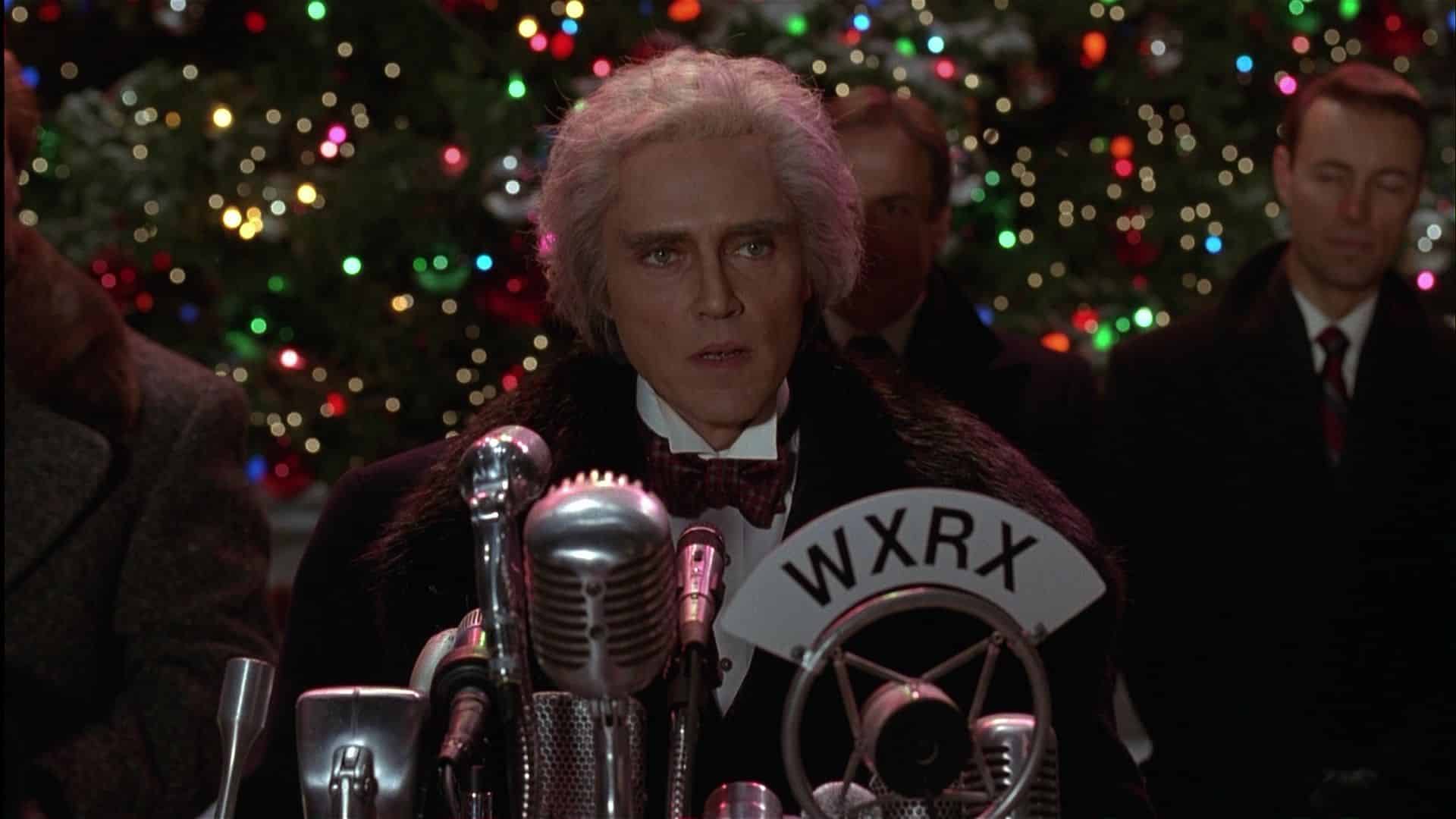
In the meantime, if a superhero film with social messages is your thing, get ready to meet the movie’s true villain: Max Shreck. No, this is not the cinematic alter ego of a lesser-known rogue like Calendar Man, Killer Moth, or Clock King. Max Shreck is just Max Shreck, an evil billionaire whose opening scene sees him plotting to bypass city council permits, with a grand scheme to monopolise Gotham electricity.
It might seem strange now but back in the 90s, populist billionaires who chose to bypass laws and regulations to line their own pockets rather than help society were considered villainous.
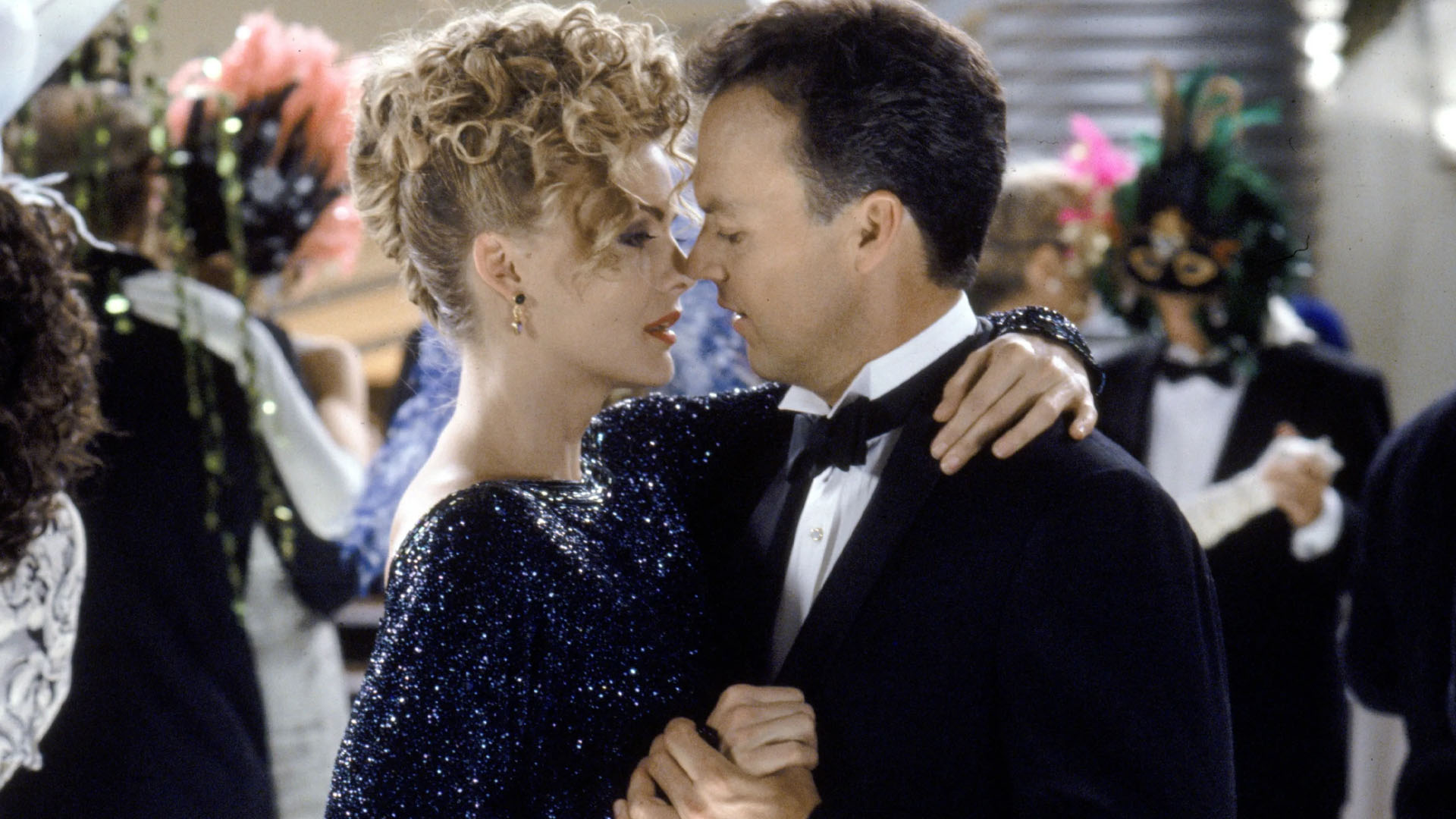
Shrek’s kidnapping by the Penguin and his “Circus Gang” serves as the film’s first action point and also sees the first interaction between Batman and Shreck’s secretary, Selina Kyle. Comic book fans will recognise that Kyle eventually becomes Catwoman (in a genuinely bizarre way) but may not recognise the “Circus Gang”. That is because, like Shreck, they’re not from the comic’s lore, but because having a circus attack Christmas is the most Tim Burton action sequence imaginable.
It also introduces the two relationships vital to the film’s success. Michelle Pfeiffer and Michael Keaton’s sexual tension, and Danny DeVito and Christopher Walken’s over-act off. People talk about 90s acting duos like Pacino and DeNiro, or Tim Robbins and Morgan Freeman, but Walken and DeVito are right up there.
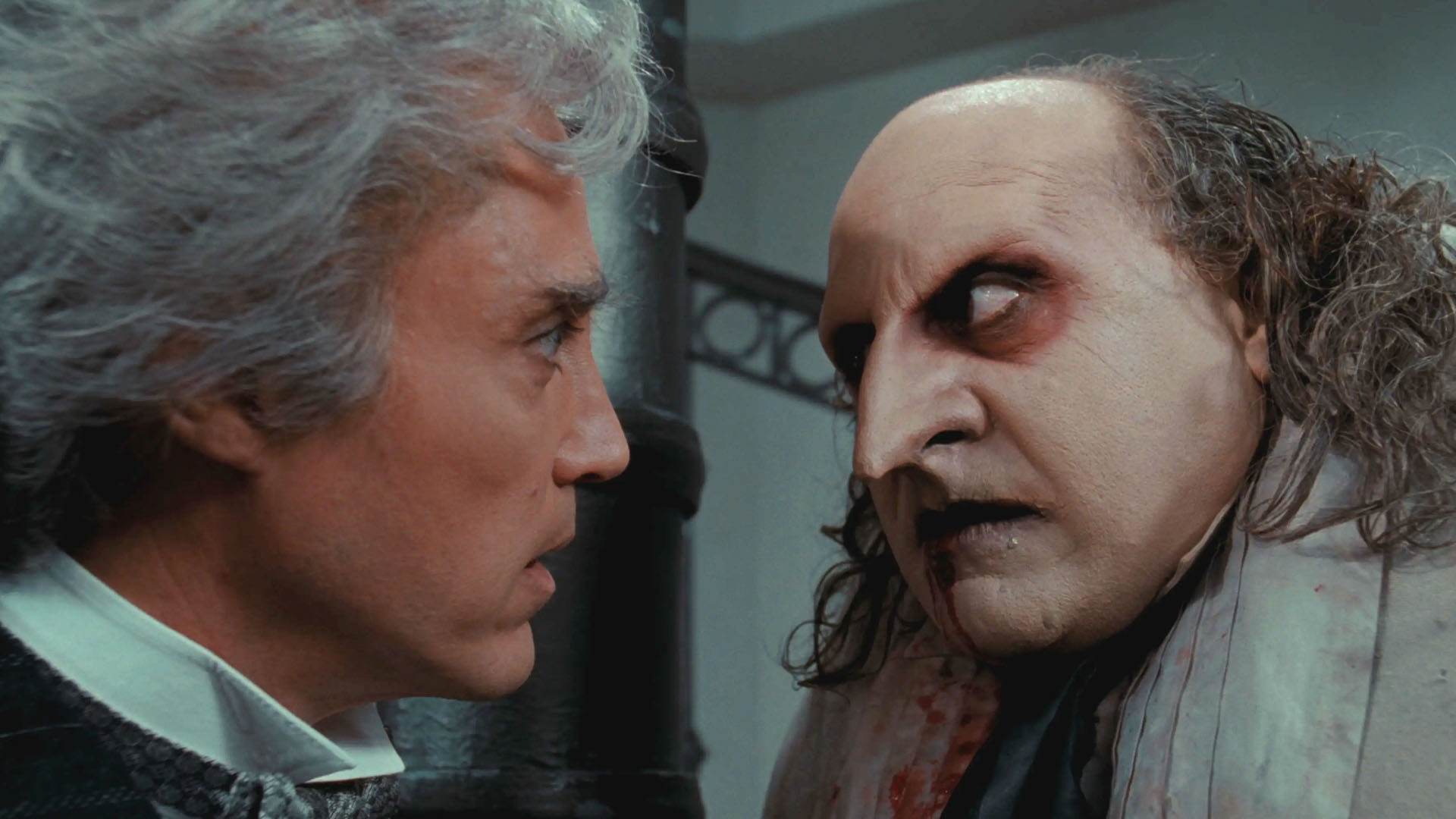
Stan Winston’s makeup on Danny DeVito for The Penguin is a thing of grotesque beauty, as is the styling of Walken’s hair and eyebrows. This is arguably the best “big” acting of the decade. It shades so close to full-on pantomime, you can almost see how Warner Bros.’ next two bat-films would end up going there.
In fact, all the main actors in this film own their role, but none more than Michael Gough who, with respect to Michael Caine, is so good he simply is Alfred. The man somehow makes video-calling the Batmobile, while ironing a shirt, to say “why are you still out?” look both natural and sane.
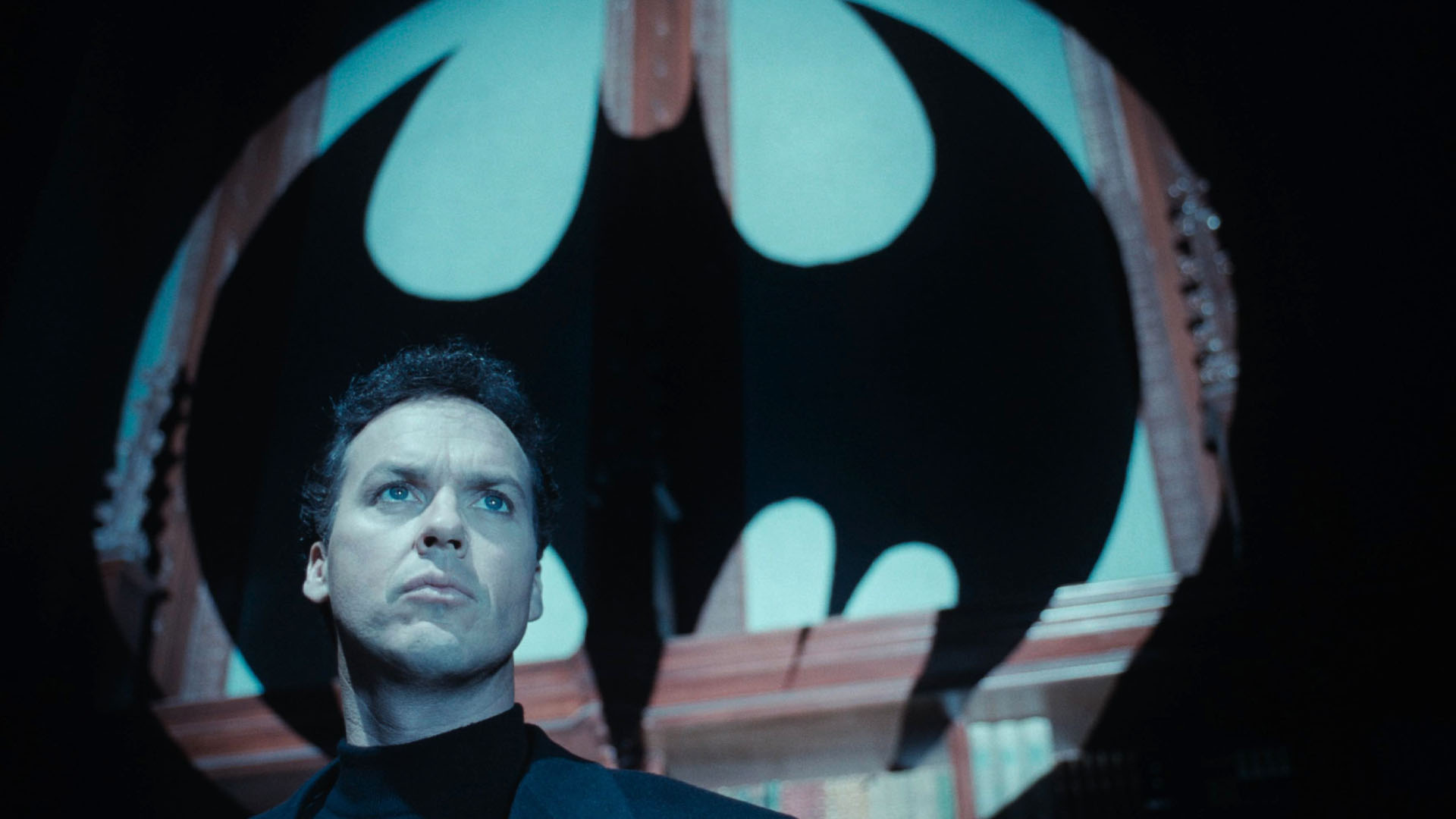
Michael Keaton’s Bruce Wayne has always conveyed “broken genius” better than his contemporaries, but now there’s also a resigned loneliness, having been dumped by his past love interest, and a content solitude to his obsessive mission, disrupted by meeting Selina Kyle/Catwoman.
In the same way that Keaton took many fans and critics by surprise in the original 1989 Batman, Michelle Pfeiffer delivers an iconic, career-defining, turn as Catwoman. If you need a scene as an example then look directly to the moment Catwoman, Batman, and The Penguin finally meet in the street. The word “meow” has never carried so much nuance.
Her performance goes from “damsel in distress” to “femme fatale” so seamlessly, and with such charisma, that there’s never a question that Batman has met his equal. The true tension in the film is not “will Batman beat the villain” but rather “will these two get a happy ending”. The pair’s chemistry genuinely makes the lack of a sequel all the more tragic.
But while there was never a follow-up, despite the smallest of in-film suggestions there would be, Batman Returns‘ style, scenes, and characterisations would inspire both the multi-award-winning 90s animated series, and the 21st-century reboots. Except the Zack Snyder stuff. No one knows what that’s about.
This film isn’t so much a snapshot of a time in cinema, as a dream of Gotham City and the Batman Universe. It made people want to explore that world, and is why The Batman, while its own unique experience, will most often be fondly compared to Batman Returns.





